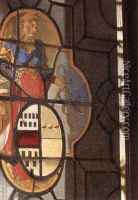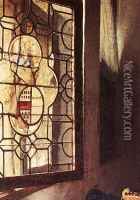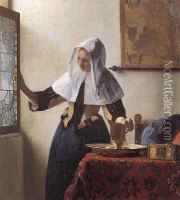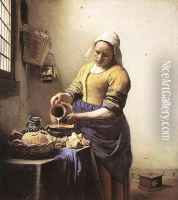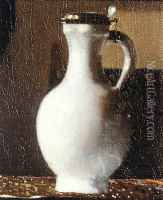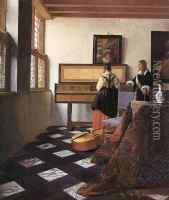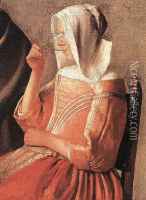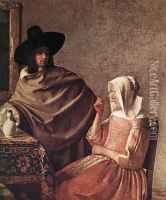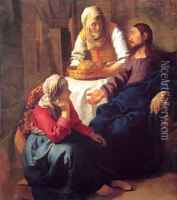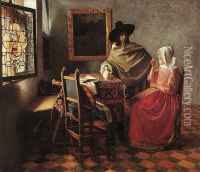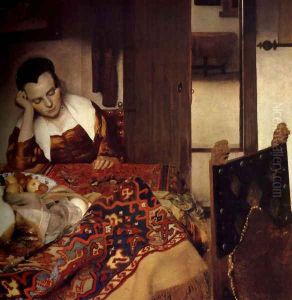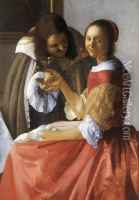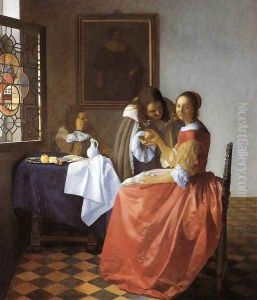Jan Vermeer Van Delft Paintings
Johannes Vermeer, known as Jan Vermeer van Delft, was a Dutch Baroque painter who specialized in domestic interior scenes of middle-class life. Born in the bustling Dutch city of Delft in 1632, Vermeer is often regarded as one of the greatest painters of the Dutch Golden Age, despite his relatively small body of work, which numbers fewer than forty paintings. His works are celebrated for their serene beauty and incredible use of light. Vermeer was the son of a silk worker and innkeeper, and inherited his father's art dealing business, which allowed him early exposure to art. He was admitted to the Delft painters' guild in 1653 and continued to live and work in Delft throughout his life. His early works were mainly historical and religious scenes, but he gradually moved toward the genre for which he is most famous: domestic interiors. These paintings often feature the same furnishings and settings, and frequently depict women engaged in daily tasks. A distinctive feature of Vermeer's work is his masterful use of light and color, with many of his paintings characterized by an ethereal luminosity and a meticulous attention to detail. His technique involved careful composition and the use of the camera obscura, which helped him achieve his famous optical effects and precise rendering of spatial relationships. Despite his artistic prowess, Vermeer's works were not widely known outside of Delft during his lifetime, and he was not financially successful, leading to debts following his death in 1675 at the age of 43. Vermeer's reputation grew in the centuries after his death, particularly in the 19th century when his works were rediscovered by art collectors and critics, establishing him as a master of Dutch painting. Today, his limited but profound oeuvre continues to be admired for its beauty and technical expertise.
